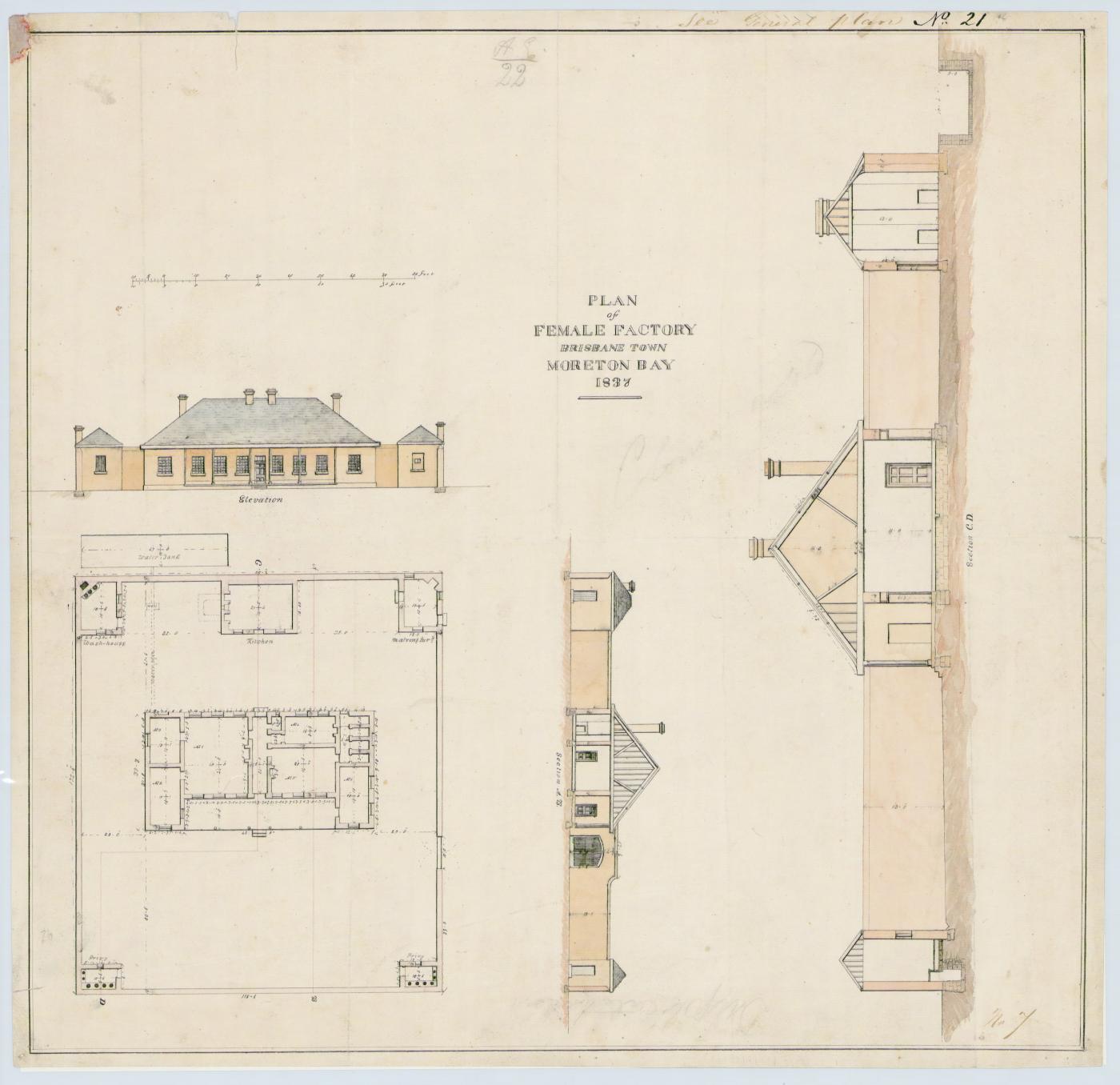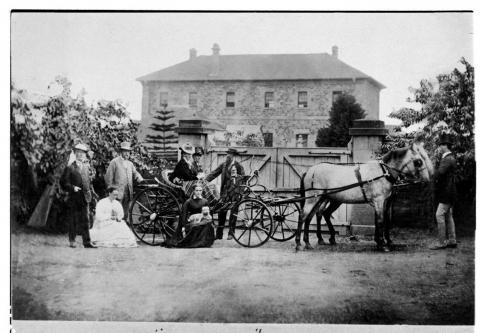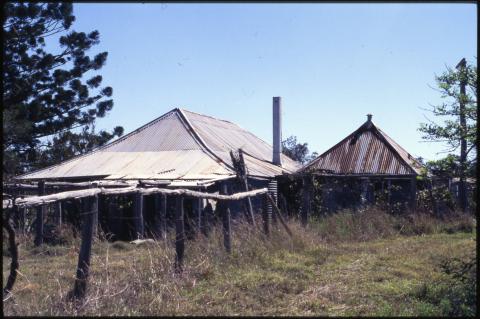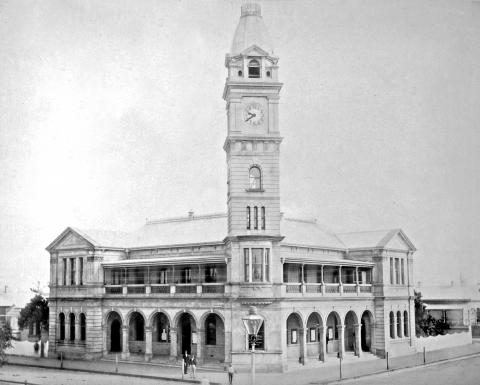
- News of the Day
-
Sunday Mail, Sunday 4 November 1928, page 27
DO YOU KNOW YOUR BRISBANE?
Charming Residential Area: Hamilton, Ascot, Eagle Farm
THE changes that time works are nowhere better illustrated in Brisbane than in the northern suburbs — Hamilton, Ascot, and Eagle Farm. Now they are the 'dress circle' residential areas of Brisbane. Very few industries mar their domestic peace, with their accompaniment of noise and bustle. A pottery works, a cotton ginnery, and an aviation field at Eagle Farm, and the Government Cold Stores at Hamilton, are the only important exceptions.
Beautiful homes, all comparatively modern, and tree-lined streets abound, making Hamilton and Ascot two of the finest and most beautiful residential suburbs in Brisbane. Again, the northern suburbs constitute the Mecca of the sporting population, containing as they do the colour and thrill of the racetrack and the aquatic splendour of a beautiful stretch of river. Few more delightful drives are to be found in or around the city than that along the Hamilton riverside from Breakfast Creek onwards. Of a weekend this charming stretch of the river is a veritable yachtsman's paradise, dotted as it is during the summer months with the spotless white wings of all classes of sailing craft, from cockleshell dinghies with absurdly disproportionate sails to stately yachts with towering masts and billowing canvas.
Few people know, or stop to give it thought, as they speed along the river drive, that the cliff face, with its fine homes perched above, fanned by the cool breezes from the river, was cut through the hillside in the early days by the labour and sweat of female convicts, housed in the Eagle Farm penal establishment, which included the grounds on which the Royal Queensland Golf Club is now located. In between Eagle Farm and Brisbane was all bush in those early days; the female convict settlement was isolated.
These women were regarded as of the lowest type. They had been first transported to Sydney, and re-transported to Brisbane for new offences. At first they were kept in the penal factory on the Green Hill, where the General Post Office now stands, but in 1837 Captain Foster Fyans, who had succeeded Captain Clunie as commandant of the settlement, found that he required the penal factory to serve other needs of the ever-growing settlement, and be decided to remove the female section to Eagle Farm flats. Quarters for the 80 odd women were built, surrounded by a stockade. A landing place on the river was erected at considerable expense, but as was not uncommon with Government works in those days, it was utterly useless. After its completion it was found that a sandbank had formed and blocked access to it from deep water.
Eagle Farm quickly became a flourishing settlement under the forced labour of the females. Maize and vegetables were grown to supply the penal settlement, and the women were kept busy washing and mending the clothes of the male section, conveyed weekly to Eagle Farm.
Miss Petrie tells of these trips to the “One conveyance my father remembers well. It was an old spring cart with a cover on it, drawn by a black and white poley bullock, yoked in shafts as a horse would be, and driven by a prisoner called Tom Brooks. This turnout belonged to the Government, and was used to convey the prisoners' dirty clothes to the women convicts at Eagle Farm each week to be washed. Two or three times when Mr. Petrie went out to inspect these quarters at Eagle Farm he took his wife and children, making a picnic of the trip. On these occasions the party always stopped on the road to boil the kettle (there were no billies in those days) and to give 'Tinker' a rest. The halting place was past Breakfast Creek, on the river bank, where the iceworks were afterwards built. There was a spring there, and it was a nice place to rest.” Nowadays the route taken by the old bullock dray is covered by well-made thoroughfares, along which motor cars and electric trams carry, on pleasure bent, as many as 30,000 people in one day. For Eagle Farm has become the mecca of the sporting fraternity — the home of the sport of kings. Money has been literally poured out at the Ascot racecourse, over £100,000 having been spent on course improvements alone since 1914. The large sums of prize money now competed for annually make a strange comparison with the prize list of the 40's, when Brisbane saw its first race meeting at Cooper's Plains, the prize money for the three days' racing being £147.
New Farm racecourse came into existence in 1846, and it was not until 1865 that the first race meeting was held at Eagle Farm by the Queensland Turf Club, under the patronage of the Governor, Sir George Bowen. The rapid increase in the popularity of horse racing since then has been phenomenal, and attendance at Eagle Farm course is now a most important part of the Brisbane's social round.
But it is not alone the turf which has made the northern suburbs so popular with the sporting world. The Hamilton reach of the river was quickly seen to be an excellent site for the pleasure of those who loved “laundry” in Tom Petrie's Reminiscences:
A wet sheet and a flowing sea,
A wind that follows fast,
And fills the white and rustling sail
And bends the gallant mast.
The Brisbane Sailing Club, now the Royal Queensland Yacht Club, flying the blue ensign, was formed, and held its first cruise in the Hamilton reach in 1885. Until the outbreak of war these cruises, or opening days — ceremonial occasions of the yachtsmen — were an outstanding feature of the social as well as the sporting calendar. The historic old Lucinda, with her decks crowded, was invariably in attendance, generally with a large number of the city's most important personages and visitors.
The early records of these yachting carnivals in the Hamilton reach are studded with names that have become household words in Brisbane. Aided sometimes by other river clubs, but mainly through its own efforts, the Royal Queensland Yacht Club has familiarised the townspeople with the beautiful appearance of swelling canvas on the river, and it is not surprising that from its inception the sport attracted the patronage of the highest in the land. The club's first list makes interesting reading, among the names being those of Sir George Bowen, Dr. O'Doherty, and many others who have not yet been forgotten, while there is still with us, Mr. Thomas Welsby, authority on all matters pertaining to Brisbane waters and the vessels that sail thereon.
Eagle Farm doubtless received a self-explanatory name. But almost it seems to have had a touch of prophecy about it, for in Eagle Farm have been laid the foundations of the State's aviation. The sight and sound of aircraft speeding overhead with mail and passengers for far towns of the State is today common, but until 1920 the drone of an aeroplane, even at Eagle Farm, was a rare sound. Thus does progress march steadily on.
- Background
-
This furst female facptry, or penitentiary, was built on the site of the General Post Office in Queen Street.
In 1937, Captain Fyans wanted teh site for other purposes so moved the feamle factory to Eagle Farm. These plans are for the building of the Eagle Farm facility.
Female prisoners were 'kept under strict confinement' to prevent them from interacting with the men in the settlement, who greatly outnumbered them. Eagle Farm afforded plenty of scope for the operations of the women, who were employed in farming maize, vegetables and other crops to feed the settlement, as well as laundry, needlework, mending of clothes' which were conveyed to Eagle Farm weekly. Tehy were also involved in the cutting of Hamilton Road.
Flogging of female convicts was strictly prohibited. Punishments included solitary confinement, restriction of rations, leg irons, and having their heads shaved.



